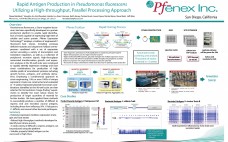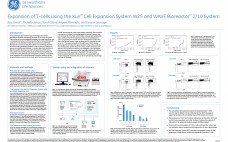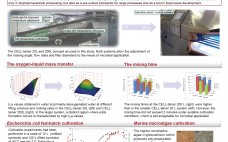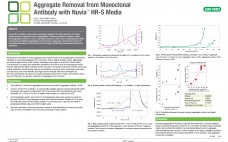Pseudomonas fluorescens, a Gram-negative bacterium, has been specifically developed as a protein production platform to enable rapid identification of strains capable of expressing high titers of soluble and active protein. PfÄ“nex Expression Technology (TM) employs a toolbox of engineered P. fluorescens host strains, including protease deficient mutants and chaperone/ foldase overexpressors combined with a set of expression vectors encoding a variety of transcription and translation regulators, as well as a collection of periplasmic secretion signals. High-throughput automated transformation, growth, and…
Year of Publication
Expansion of T-cells using the Xuri Cell Expansion System W25 and WAVE Bioreactor 2/10 System
Immunotherapeutics include drugs and biologics that render therapeutic benefit by harnessing the power of the immune system. The promise of immune-mediated therapies is to target specificity with a consequent reduction in off-therapeutic effects. Immunotherapeutic products can be classified broadly into (1) active immunotherapy (therapeutic vaccines), (2) adoptive cellular immunotherapy (transfer of immune cells, genetically modified T-cells or precursor cells) or (3) passive immunotherapy (antibody or receptor ligand administration). Recent scientific advances have led to clinical trials of both active and…
Microbial Cultivation In Different Scales in the CELL-tainer® Rocking Single-use Bioreactor
Single-use bioreactors are applied in the biopharmaceutical industry for mammalian cell culture processes. The low gas-liquid mass transfer coefficient generally achieved in these systems does not allow for the compatable application of microbial processes in these bioreactor systems. The CELL-tainer® technology combines a vertical and horizontal movement in a rocking bioreactor concept, so that the turbulence and power input is intensified. In this system, mass transfer rates comparable to stirred tank reactors are achievable. Thus, volumetric oxygen transfer rates (kLa)…
The Importance of Thresholding in Imaging Analysis of Protein Aggregates
Dynamic imaging particle analysis (DIPA) shows much greater sensitivity to transparent particles, such as protein aggregates, than light obscuration can. While not yet fully accepted in industry compendia, DIPA is being used increasingly in the formulation process for characterization of sub-visible particulates in biologics. DIPA measures particle size and shape by first creating a binary image based upon a defined threshold from the background value for each pixel in the image. The resulting binary image is used for all particle…
A Systematic Strategy of Cell Culture Media and Feed Development
Development of a high-performance and robust fed-batch process for recombinant Chinese Hamster Ovary (CHO) cell lines presents challenges in light of the diverse nutritional requirements observed with different clonally derived cell lines as well as the varied production phases. To address these challenges, we will discuss an innovative strategy of media, feed, and process development that has been developed at FUJIFILM Diosynth Biotechnologies (FDB). The efficiency and effectiveness of this strategy have been well demonstrated in multiple mAb-producing CHO cell…
Aggregate Removal from Monoclonal Antibody with Nuvia™ HR-S Media
Nuvia HR-S media is a new cation exchanger designed for high resolution of closely related product impurities such as aggregates. It delivers excellent resolution, with a final aggregate content of <0.3%, and high recovery of >80% from a heterogeneous feed of monoclonal antibody aggregates and monomer. Aggregate content and recovery in the eluate were shown to be functions of the target conductivity measured at the end of collection.
A Case Study: 3-step Process for Efficient mAb Purification
This study showcases a portfolio of commercially available biopharmaceutical chromatography resins designed for the efficient purification of monoclonal antibodies. A 3-step purification process has been implemented which showed effective removal of the main contaminants, low ligand leakage, and high yields over the entire process. Eshmuno® A affinity chromatography resin was evaluated as the first step in the process. The Protein A elution pool was further purified using cation exchange chromatography. Two cation exchange resins with different selectivities were compared. The…
Next Generation Depth Filters for the Clarification of Flocculated Mammalian Cell Culture
Increasingly high cell density, high product titer cell cultures, containing mammalian cells are placing a larger burden on traditional downstream clarification and purification operations due to higher product and impurity levels. EMD Millipore has addressed these challenges by developing a proprietary single-use technology to improve primary and secondary direct depth filtration of flocculated high cell density mammalian cell cultures. The use of graded depth filters, combined with pre-treatment technologies, have achieved higher primary throughput capacities and lower flushing volumes as…
Progress On A Fully Disposable Downstream Platform: A Simple, Risk-Free, Plug-in Solution To Solve The DSP Bottleneck
Natrix HD Membrane technology features a polymeric hydrogel formed within a flexible porous support matrix. The support matrix provides mechanical strength, while the hydrogel properties determine the separation chemistry of the product. An advantage of the Natrix chemistry is the ability to place virtually any functional group chemistry throughout the hydrogel polymer. Natrix HD membrane technology combines the superior binding capacity of conventional resinbased columns with the high throughput of membranes in a single-use format that eliminates costly packing, cleaning,…
Liquid-Liquid Porometry of Viresolve® Pro Membrane
A liquid-liquid porometry (LLP) test was developed to characterize the pore size distribution of Viresolve® Pro membrane. Data generated by this test supports the understanding of the size-based virus removal mechanism of the filter. The LLP test also is used at-line during membrane casting. Process control based on LLP results improves membrane consistency.










